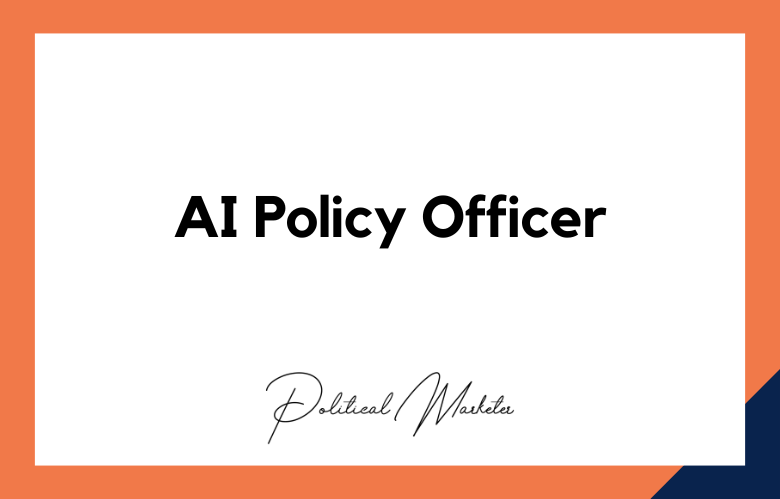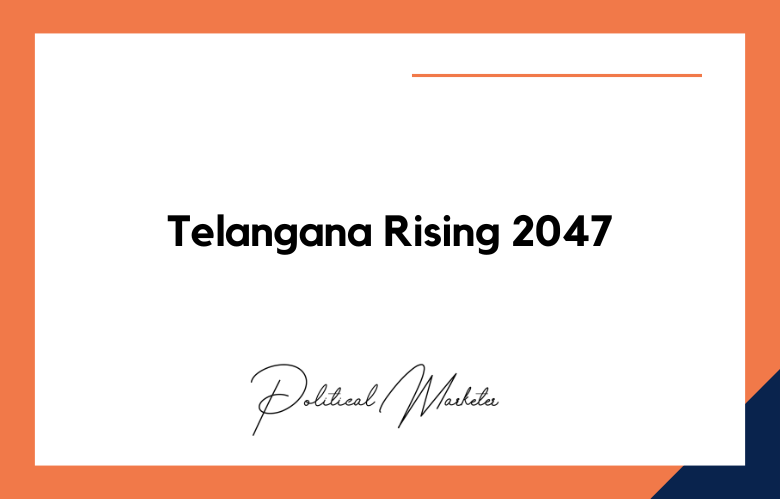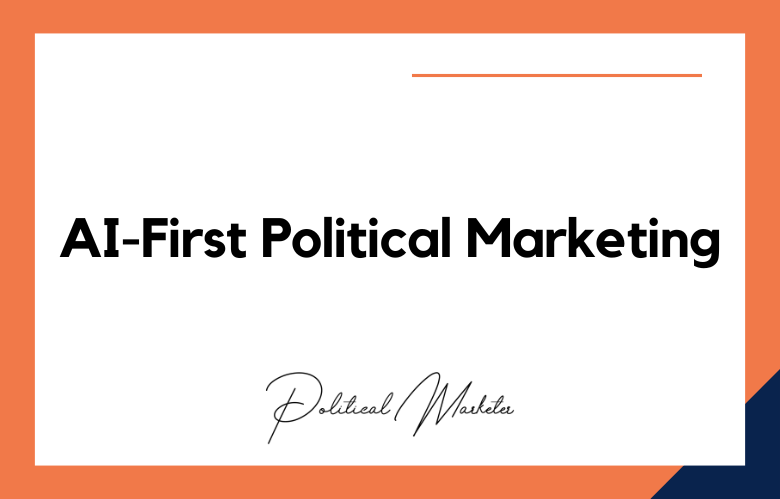In the digital age, data is king. We’ve seen a growing trend of political campaigns using big data tools to micro-target voters. By understanding the behavior and preferences of individual voters, campaigns can tailor their message and approach in a way that is far more effective than the traditional one-size-fits-all approach.
How Big Data Tools Help Political Campaigns
Big data collects large amounts of data and is sorted to identify patterns and trends. In political campaigns, big data collect information about voters, including their demographics, voting history, and interests. This data is then analyzed to identify which voters are most likely to support the campaign.
Big data tools help political campaigns in several ways
- They make it possible for campaigns to collect vast amounts of data.
- They provide techniques for sorting through this data so it can be effectively analyzed.
- They offer methods for communicating with voters based on the results of the analysis.
Big data tools political campaigns use are voter files. Voter files are database systems that contain detailed information about registered voters, including their voting history, party affiliation, demographic data, and contact information.
In the past, voter files were only accessible to large political parties and campaigns. But now, thanks to new data services like i360, any movement can access this powerful tool.
Another big data tool frequently used by political campaigns is social media data. By analyzing the social media behavior of potential voters, movements can gather valuable insights into their interests and preferences. This information can be used to micro-target ads and content on social media platforms like Facebook and Twitter.
Big data tools political campaigns use voter data. Voter data includes everything from voting history to demographics to addresses. Political campaigns use this data to create models of likely voters and then target those voters with personalized messages.
For example, a campaign might target African American women who live in urban areas and have voted in past elections with a message about criminal justice reform.
Another popular big data tool is social media data. Top Social media channels such as Twitter and Facebook are a goldmine of information for political campaigns. Campaign staffers can use social media data to track important issues to potential voters and then craft messaging accordingly. Social media data can identify potential donors and volunteers for a campaign.
Big data tools can also be used for fundraising purposes. Campaigns can use donor information to target potential donors with fundraising appeals. Additionally, campaigns can use donor information to determine which issues are important to their supporters and then focus their messaging accordingly.
In the past, political campaigns relied on voter surveys and public opinion polls to get a sense of where voters stood on the issues. However, these methods only provide a snapshot of voter sentiment at a given time. They don’t give campaign operatives the ability to track how individual voters’ opinions change over time or to identify potential swing voters.
Big data tools solve these problems by allowing campaigns to collect and analyze vast amounts of information on individual voters. For example, using big data tools, campaign operatives can track how often a particular voter visits a campaign’s website, what pages they visit, and how long they spend on each page.
Operatives can also see whether or not a voter has opened an email from the campaign and clicked through to any links therein.
This wealth of information allows campaigns to micro-target voters with personalized messages designed to appeal to their interests. For example, if a campaign knows that a particular voter is interested in environmental issues, they can target that voter with messages about the candidate’s environmental policies. Or, if a campaign knows that a voter is undecided on a particular issue, they can target them with messaging that attempts to sway them one way or the other.
Many political campaigns have started using big data tools to target potential voters effectively.
In the past, political campaigns relied on onion polls and demographic data to make keen decisions about where to focus their efforts. However, these methods are often inaccurate and do not give campaigns a complete picture of the electorate. With big data tools, campaigns can get a much more detailed view of the people they are trying to reach.
For example, campaign managers can use big data tools to track the social media activity of potential voters. They can use this information to figure out which topics are important to them and what kinds of messages are resonating. This allows campaigns to create targeted ads and messages that are more likely to connect with potential voters.
Big data tools have also been used to identify potential donors and volunteers for political campaigns. By analyzing data from online sources, campaigns can find people who might be interested in supporting their candidate. This helps campaigns save time and money by only targeting people who are likely to get involved.
How It Works
Micro-targeting relies on data collected from various sources, including public records, consumer behavior data, and social media activity. This data is then analyzed to develop detailed profiles of individual voters.
Once these profiles have been developed, campaigns can use them to target voters with ads, emails, phone calls, or door-to-door visits that are specifically tailored to their interests and needs.
For example, suppose a campaign has developed a voter’s profile concerned about education reform. In that case, they may target voters with ads or messages focusing on the candidate’s education reform platform. By contrast, if a campaign has developed a voter profile that is mainly concerned with taxes, they may target that voter with ads or messages that focus on the candidate’s tax reform platform.
Micro-targeting aims to give each voter the impression that the campaign cares about their specific needs and concerns and is more likely than other candidates to address those needs if elected.
Leveraging Big Data Analytics for Winning Political Campaigns in 2024
Leveraging big data analytics for winning political campaigns in 2024 represents a pivotal shift in electoral strategy as candidates and political parties harness the power of data-driven insights to inform their messaging, targeting, and mobilization efforts. In an era of unprecedented access to vast amounts of digital information, big data analytics offer campaigns the ability to gain a deeper understanding of voter preferences, behaviors, and motivations, enabling them to craft more effective and targeted campaign strategies. This article explores how big data analytics are transforming political campaigning in 2024, empowering candidates to secure electoral victory through data-driven decision-making.
Voter Profiling and Segmentation: Big data analytics enable political campaigns to profile and segment voters based on a wide range of demographic, psychographic, and behavioral attributes. By analyzing data from sources such as voter registration records, social media profiles, consumer databases, and polling data, campaigns can identify key voter segments and tailor their messaging and outreach efforts to resonate with specific groups.
Predictive Modeling and Forecasting: Big data analytics enable political campaigns to develop predictive models and forecast electoral outcomes with greater accuracy. By analyzing historical voting data, demographic trends, polling data, and other variables, campaigns can identify patterns and correlations that inform their electoral strategies, allowing them to allocate resources strategically, prioritize key battlegrounds, and optimize their campaign efforts for maximum impact.
Targeted Messaging and Microtargeting: Big data analytics enable political campaigns to deliver targeted messages to specific voter segments through microtargeting techniques. By analyzing data on voter preferences, interests, and behaviors, campaigns can tailor their messaging to resonate with different audience segments, delivering personalized communications through channels such as email, social media, and digital advertising.
Optimized Resource Allocation: Big data analytics enable political campaigns to optimize resource allocation by identifying the most cost-effective and impactful strategies for reaching voters. By analyzing data on the effectiveness of different campaign tactics, channels, and messages, campaigns can allocate their resources more efficiently, maximizing their return on investment and minimizing wasted resources.
Real-Time Monitoring and Response: Big data analytics enable political campaigns to monitor and respond to changing dynamics in real-time. By analyzing data from social media, news sources, and other sources, campaigns can track voter sentiment, identify emerging issues, and adapt their messaging and tactics accordingly, allowing them to stay ahead of the curve and respond rapidly to evolving circumstances.
Unveiling the Power of Big Data Tools in Political Campaigns for Election Success
In today’s digital age, the role of big data tools in political campaigns has emerged as a game-changer, offering unparalleled insights and opportunities for electoral success. These sophisticated analytics tools allow campaigns to delve deep into vast troves of data from diverse sources, enabling them to understand voter sentiments, preferences, and behaviors like never before. Here, we unravel the immense potential of big data tools in shaping political campaigns and driving election victories.
Data-Driven Decision Making: Big data tools empower political campaigns to make informed decisions backed by robust data analysis. By analyzing demographic data, social media interactions, and voter histories, campaigns can identify key issues, target specific voter demographics, and tailor their messaging for maximum impact.
Precision Targeting: With big data tools, campaigns can engage in precision targeting, reaching out to voters with tailored messages that resonate with their interests and concerns. By leveraging predictive analytics, campaigns can identify swing voters, undecided, and key constituencies, allowing them to allocate resources strategically and focus their efforts where they matter most.
Real-Time Adaptability: The dynamic nature of big data enables campaigns to adapt and respond in real time to shifting trends and emerging issues. Through continuous monitoring of social media conversations, news cycles, and polling data, campaigns can stay ahead of the curve, adjusting their strategies and messaging to capitalize on opportunities and address challenges as they arise.
Optimized Resource Allocation: Big data tools enable campaigns to optimize resource allocation, ensuring that every dollar spent yields maximum returns. By analyzing the effectiveness of different campaign tactics and channels, campaigns can allocate their budgets strategically, investing in initiatives that have the greatest potential to sway voters and shape outcomes.
Enhanced Voter Engagement: By leveraging big data tools, campaigns can enhance voter engagement and mobilization efforts. Through personalized communication strategies, targeted outreach, and micro-targeted advertising, campaigns can connect with voters on a deeper level, inspiring them to turn out at the polls and support their candidates.
In essence, big data tools have revolutionized the landscape of political campaigning, offering unprecedented capabilities for voter analysis, targeting, and engagement. As campaigns continue to harness the power of data-driven insights, the role of big data in shaping election outcomes will only continue to grow, cementing its status as a cornerstone of modern political strategy.
Conclusion
Big data tools offer many advantages for political campaigns looking to micro-target voters. By understanding the behavior and preferences of individual voters, campaigns can tailor their message and approach in a way that is far more effective than the traditional one-size-fits-all approach.
With big data tools, political campaigns can target voters with laser precision and dramatically increase their chances of success at the polls.
Call: +91 9848321284
Email: [email protected]
How Big Data Tools Help Political Campaigns to Micro-Target Voters: FAQs
What Is Big Data in the Context of Political Campaigns?
Big data refers to the large-scale collection and analysis of voter information, demographics, behavior, and online interactions used to inform campaign strategies.
How Do Political Campaigns Collect Big Data?
Campaigns gather data from voter rolls, social media platforms, surveys, fundraising platforms, and third-party data brokers.
Why Are Big Data Tools Important for Political Campaigns?
They help campaigns identify voter segments, predict behavior, personalize outreach, and allocate resources efficiently.
What Are the Most Common Big Data Tools Used in Politics?
Tools include voter databases (e.g., NationBuilder), analytics platforms (e.g., Tableau, Google BigQuery), CRM systems, and AI-driven predictive modeling software.
How Do Big Data Tools Help in Voter Targeting?
They allow campaigns to segment voters by demographics, psychographics, and behavior, enabling personalized messages.
Can Big Data Improve Campaign Fundraising?
Yes, predictive analytics identify likely donors and optimize outreach to maximize contributions.
What Role Does Social Media Play in Big Data Analytics?
Social media provides real-time sentiment analysis, audience segmentation, and trend tracking for campaign narratives.
How Does Predictive Modeling Work in Political Campaigns?
By analyzing past voting patterns, demographics, and survey data, predictive models forecast voter turnout and candidate support.
What Is Microtargeting in Political Campaigns?
Microtargeting uses big data to deliver highly specific campaign messages to individual voter groups.
How Do Campaigns Ensure Data Accuracy?
They use verification methods such as cross-referencing voter databases, cleaning duplicate records, and updating data in real-time.
What Ethical Concerns Exist With Big Data in Politics?
Concerns include voter privacy, data misuse, misinformation targeting, and lack of transparency in algorithms.
Are There Legal Regulations Governing Political Data Use?
Yes, data protection laws like GDPR (EU) and PDP Bill (India) restrict how voter data is collected, stored, and used.
How Do Big Data Tools Measure Campaign Effectiveness?
They track KPIs such as voter engagement, ad performance, fundraising efficiency, and volunteer mobilization.
What Is the Role of AI in Big Data Political Analytics?
AI enhances predictive accuracy, automates voter sentiment analysis, and optimizes communication strategies.
How Do Campaigns Use Geospatial Data?
Geospatial analytics help map voter density, track canvassing efforts, and optimize rally or event locations.
What Are Some Real-World Examples of Big Data in Political Campaigns?
Obama’s 2012 campaign pioneered data-driven voter targeting, while recent elections worldwide use similar advanced analytics.
How Does Big Data Influence Political Advertising?
It enables precise audience targeting across digital platforms, reducing ad spend waste and improving persuasion rates.
Can Big Data Tools Predict Election Outcomes?
While not always accurate, advanced models can provide strong forecasts by analyzing voter behavior, turnout, and polling data.
How Do Smaller Campaigns Use Big Data With Limited Budgets?
They rely on cost-effective tools like open-source databases, cloud analytics platforms, and social media insights.
What Is the Future of Big Data in Political Campaigns?
Future trends include real-time analytics, AI-driven campaign automation, blockchain-based voter verification, and stricter data privacy compliance.











